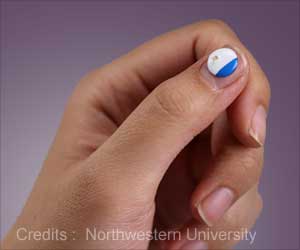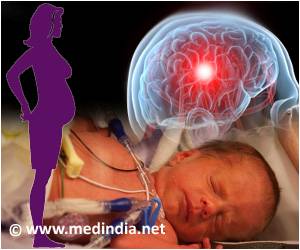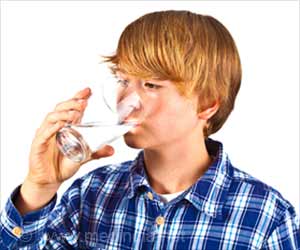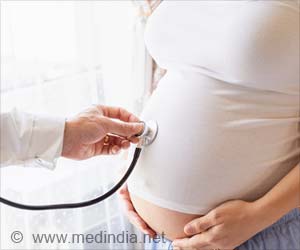Babies lose 7-10 percent weight in the first 4 to 5 days after birth which is normal. So, babies should be fed properly to avoid any weight loss, which could lead to jaundice.

‘Babies lose 7-10 percent weight in the first 4 to 5 days after birth which is normal. So, babies should be fed properly to avoid any weight loss, which could lead to jaundice.’





Q: How common is jaundice in neonates? A: Nearly 60-70 per cent of newborns have jaundice. The majority of babies have physiological jaundice which doesn't need treatment. It usually starts after 24 hours of birth and then increases progressively to 10-14 mg/dl till the 5th day of life. Usually comes down to normal on the 7th to 10th day.
Q: What are common risk factors for jaundice?
A: Blood group incompatibility between mother and baby (Mother O+ve and Baby is A+ve or B+ve or Mother is Rh-negative and Baby is Rh positive)
Cephalhematoma- blood collection beneath the skin of scalp which is because of instrumental delivery and usually subsides on its own in a few days.
Advertisement
Q: What are the ways of estimating jaundice in my baby?
Advertisement
Transcutaneous bilirubin meter- This is a machine that estimates bilirubin levels in subcutaneous tissue (tissue present beneath the skin). It is a non-invasive method of estimating bilirubin. If the bilirubin level is below 13 mg/dl, the level estimated by the machine correlates well with the blood level. If the level estimated is more than 13 mg/dl, we should check it with the blood test. Blood test - Estimating bilirubin in a laboratory by blood sample is the best way of assessing the level of jaundice.
Q: Peak levels of jaundice come on the 5th day of life, so when should one see the doctor again?
A: Usually, babies are discharged from the hospital with the mother within 24 to 72 hours of birth. First, follow-up should be after 2 to 3 days of discharge. The majority of hospitals nowadays assess transcutaneous bilirubin before discharge. Depending upon risk factors present in the baby and the level of transcutaneous bilirubin before discharge, a doctor may call you earlier than 2 to 3 days post-discharge.
Q: What precautions to take at home so that jaundice doesn't rise fast?
A: The baby should be fed appropriately at home. Jaundice increases in a subset of babies who lose weight excessively. This kind of jaundice is called breastfeeding jaundice, it is not due to breast milk. It is because of inadequate intake of breast milk in the first few days. The point to note here is that babies lose 7-10 per cent weight in the first 4 to 5 days after birth which is normal.
Q: Why worry about jaundice?
A: In babies whose blood bilirubin levels reach harmful levels (>25 mg/dl), bilirubin may get into the brain and cause reversible damage (called acute bilirubin encephalopathy) or permanent damage (called kernicterus or chronic bilirubin encephalopathy)
Q: What are signs of worsening of jaundice one should notice at home?
A:
- Palms and soles are yellow
- Your baby has any difficulty eating
- Your baby is more sleepy than usual
- It is hard to wake up your baby
- Your baby is irritable and is difficult to console
- Your baby arches their neck or body backwards
A: The goal of treating jaundice is to efficiently and safely reduce the level of bilirubin. Babies with mild hyperbilirubinemia may need no treatment at all. Approximately 10-15 per cent of babies with hyperbilirubinemia may need treatment.
Frequent feeding- Providing adequate breast milk is an important part of preventing and treating jaundice because it helps in the removal of bilirubin in stools and urine. If your baby is not getting enough milk through breastfeeding, your doctor can talk to you about options such as supplementing with formula or donor breast milk. You will know that your baby is getting enough milk if they have at least six wet diapers per day, the color of their stools changes from dark green to yellow, and they seem satisfied after feeding.
Phototherapy- Phototherapy ("light" therapy) is the most common medical treatment for hyperbilirubinemia in babies. In most cases, phototherapy is the only treatment required. The baby's skin surface is exposed to special blue light, which breaks bilirubin into compounds that are easier to eliminate in stool and urine.
Exchange transfusion- Exchange transfusion is an emergency, life-saving procedure that is sometimes necessary to rapidly decrease bilirubin levels. The transfusion replaces a baby's blood with donated blood to quickly lower bilirubin levels (2 to 3 hours). Exchange transfusion is performed only for babies who have not responded to other treatments and who have signs of or are at significant risk for brain damage
Q: Will sunlight help in curing jaundice?
A: Exposure to sunlight is not recommended due to the risk of sunburn unless ultraviolet rays are filtered out. Sunburn does not occur with the lights used in phototherapy.
Q: Are there any side effects of phototherapy?
A: Phototherapy is very safe, but it can have temporary side effects, including skin rashes and loose stools. Overheating and dehydration can occur if a baby does not get enough breast milk or formula. Therefore, a baby's skin colour, temperature, and the number of wet diapers should be closely monitored.
Q: Should the mother stop breastfeeding during phototherapy?
A: No, Breastfeeding should continue during phototherapy. Only when baby's bilirubin is so high that baby needs exchange transfusion or in babies with serious dehydration, intravenous (IV) fluids may be given for some time.
Q: Does the maternal diet have something to do with newborn jaundice?
A: Maternal diet has no role in neonatal jaundice. In most cases, it is due to the immaturity of liver enzyme
Source-IANS










